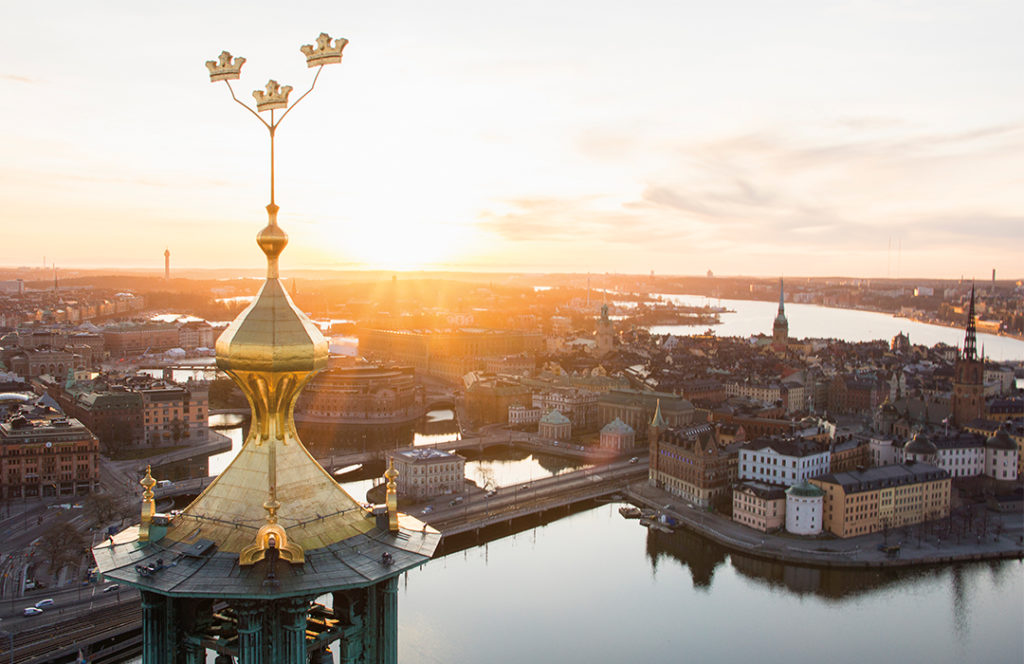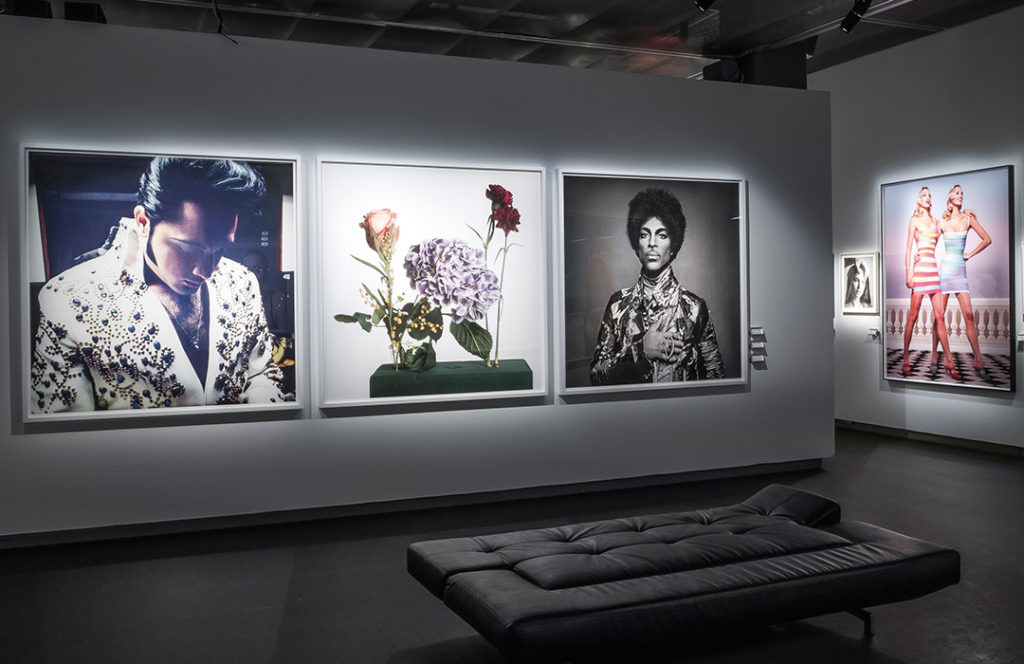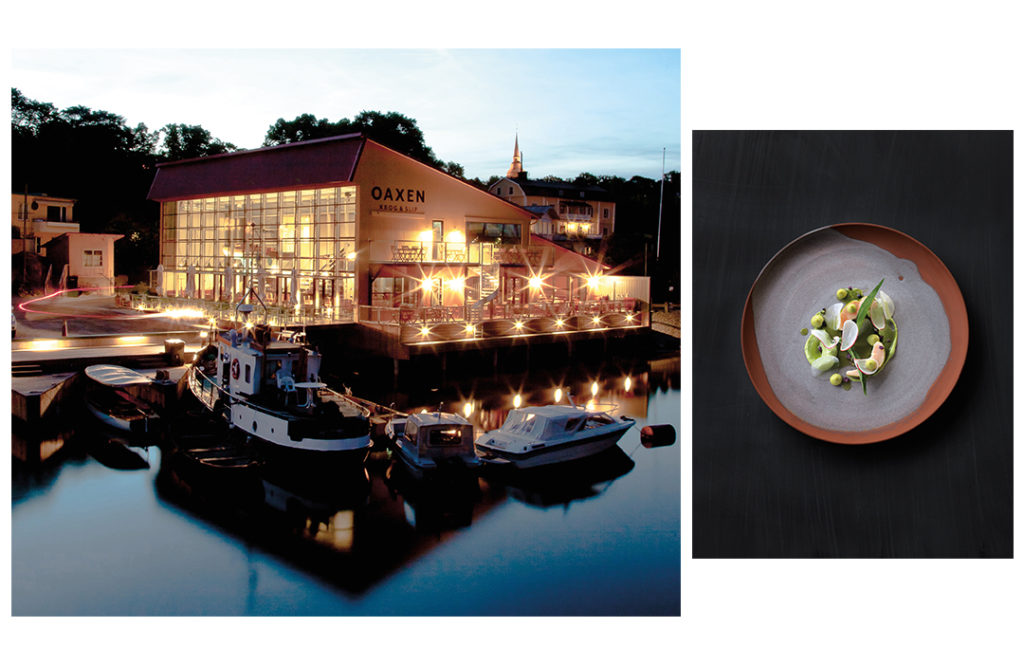I arrived in Stockholm after the sun had set, so I didn’t get my first real look at the city until the next morning. From my bed at the history-laden Hotel Skeppsholmen, I could see across the bay waters of Stockholms ström to the edges of Södermalm, the edgy residential neighbourhood that’s a hub of vintage shops, independent eateries, and galleries. Between the trees perched over the water, there are low-rise buildings in shades of brown, cream, yellow, and orange, stacked side by side like blocks of Lego, with boats and ferries coasting back and forth in front of them. The view was impressive, but as I started to explore the city, I quickly learned that every site, from hotel to museum to rooftop bar, claims to offer its own impressive view of Sweden’s capital. Fortunately, all the claims are true—this is one good-looking city.

By the numbers, Stockholm’s geography sounds confusing—the city is spread over 14 islands, connected via 57 bridges—but it’s actually incredibly accessible, and easy to navigate. A short walk is all that’s required to get from one neighbourhood to the next, and each one offers a wildly different city vibe: within a half-hour, visitors can trek from Gamla Stan, Stockholm’s quaint 13th-century, cobblestone-filled Old Town, to the bustling city centre and headquarters of Nordiska Kompaniet (known as NK—Sweden’s version of the Hudson’sBay Company), to the glamorous Östermalm district, which is home to upscale boutiques, food halls, and spas.
Stockholm has, commendably, preserved its architectural history while innovating from the inside out—another trait that contributes to the city’s casual elegance and inviting atmosphere.
Hotel Skeppsholmen, my temporary home throughout the trip, is a perfect example. Though it opened in 2010, the hotel’s roots date back to 1699, when the two-building property functioned as a military barracks (Skeppsholmen, the small island on which the hotel sits, was once a naval base). The hotel’s buildings (listed by the government as historic) have been brought up to date; the designers managed to incorporate minimalistic Scandinavian design while preserving and highlighting historical details. For instance, while guestroom décor is modern and cozy, the flooring in the halls is original. Footsteps echo powerfully today just as they would’ve done for the military personnel walking the same path decades ago. And each guest room boasts a plaque with a bit of history—the story of a former occupant. My suite was dedicated to commander-in-chief Charles Léon De Champs, who at one point was head of the country’s marines and lived in the room from 1933 to 1936.
Sightseeing also offers insight to the city’s mastery of honouring history while showcasing contemporary culture. There are vast arrays of artsy spectacles to take in, from ABBA: The Museum on the tree-filled island of Djurgården to Kulturhuset, a multi-floored cultural centre—almost like an art-filled mall—with galleries,libraries, theatres, and cinemas in the heart of the city centre, to the Nobel Museum, which forms one side of Stortorget Square in Gamla Stan and offers the comprehensive history behind each Nobel Prize ever awarded.
My favourite of the lot was Fotografiska, the city’s photography museum, which is situated on the waterfront, a short walk from Södermalm. It, too, opened in 2010, but its structure dates back to 1906, when the building was a customs house for ships coming into and out of the city. The exhibitions are presented with beauty and power—an exhibit called Where the Children Sleep revealed photographs of child refugees fleeing Syria.

But art is not the only place where beauty resides here; on the top floor sits Fotografiska’s café and restaurant. Divine Swedish pastries, which harmoniously blend sweet dough with savoury spices like saffron and cardamom, shared seating in an urban rustic setting, and a wall of windows from which to gaze at Skeppsholmen, Gamla Stan, and Djurgården make this the perfect place to indulge in fika, the Swedish tradition of a mid-afternoon coffee break.
The whole gastronomy boom is another area in which Stockholm is innovating while staying true to its roots. Many concept restaurants are popping up across the city. Settling on a spot for lunch can be intimidating. Fortunately, Gunilla Blixt, an editor at Sweden’s Gourmet magazine, and a guide at Food Tours Stockholm, was on hand to advise me.
While the city has its fair share of formal and fantastic restaurants like Oaxen, which is housed in a refurbished boat shed on the shore of Djurgården, or Östermalm’s Ekstedt, which specializes in smoked dishes (Blixt says smoking is one of the hottest culinary trends in the country right now: “You can get ice cream made from smoked milk, smoked mayonnaise, even smoked licorice”), and Nosh and Chow, with its international menu, some of the most exciting places to dine are food courts, food halls, and gourmet food shops.

Ringen, a circular mall in Södermalm, re-launched its food court at the end of 2015 with kiosks from 10 of the country’s best chefs serving haute cuisine at highly affordable prices. Korvkiosk, for instance, is essentially a gourmet hotdog stand, but one that’s the brainchild of Magnus Nilsson, chef at Fäviken, one of the world’s best restaurants.
A new, intimate food hall in the plaza at Stureplan Square is an ideal place to recharge with a shrimp sandwich and a glass of Champagne, which is “popular to do while shopping,” Blixt says. And just around the corner is Sturebadet. Founded in 1885, this spa and gym has a stunning ArtDeco pool as its centrepiece and is a perfect antidote to a busy day of sightseeing or a means of working off one meal in preparation for the next.
Nearby, Östermalm FoodHall is another must-see, and the perfect place to find edible souvenirs. Having first opened in the 1880s, it is a historical hub for shopping and dining, and a prime place to people watch. Its location means it’s a favoured spot for those who work in the city core, and getting a seat during the lunch rush can be a challenge. “Most stalls are women-run, family-owned eateries,” Blixt says, and they offer everything from fruit to fish.
Blixt and I settle on lunch at Urban Deli, a grocery store with a restaurant attached. “Ingredients for every dish at the restaurant can be bought at the grocery store,” she says. At the Sveavägen location(there are four across town), we indulge in smoked shrimp and fresh salads before heading to the shop. Blixt buys some groceries while I stock up on Swedish licorice to bring home. Before we part, Blixt mentions that Urban Deli has a prime patio on the building’s roof. Unfortunately, it is closed for the afternoon, but the waiter assures me that, for the view alone, it’s worth another attempt. A vantage point in Stockholm that I haven’t seen? A return trip is definitely in order.
Feature image by Matti Niemi.
